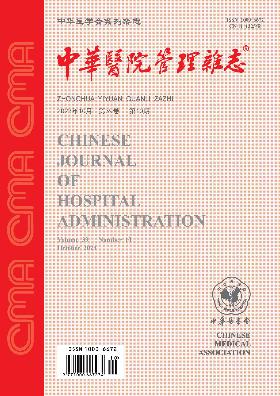Study on the relationship between career anchor and career orientation of doctors in Sir Run Run Shaw Hospital
引用次数: 0
Abstract
Objective To use the career anchor scale to understand the career development route preference of doctors, so as to provide a reference for their individual career planning and positioning, encourage them to realize their personal value, and provide scientific decision-making basis for hospital human resource management. Methods The career anchor scale was used and a career orientation scale was established. In June 2017, a group sampling survey was conducted among doctors at a university affiliated hospital in Zhejiang province, and 790 valid questionnaires were collected. The questionnaire covered 40 items, with the self-report 6 subscale and the χ2 test used for comparison of rates. Results Eight types of career anchors were commonly distributed among doctors, among which the technical/functional anchor was the main career anchor, scoring 24.45±5.11 points. There was a correlation between doctors′ career anchors and their career orientations, among which the managerial career anchors scored the highest, with a correlation coefficient of 0.228. Conclusions The career anchor theory can be used to guide the career development of employees and establish a multi-career development ladder for doctors. Key words: Health manpower; Doctors; Career anchor; Career orientation; Career planning邵逸夫医院医生职业锚与职业定位关系的研究
目的利用职业锚量表了解医生职业发展路径偏好,为医生个人职业规划和定位提供参考,鼓励医生实现个人价值,为医院人力资源管理提供科学决策依据。方法采用职业锚量表,编制职业导向量表。2017年6月,对浙江省某高校附属医院的医生进行了群体抽样调查,收集有效问卷790份。问卷共40个题项,采用自述6分量表,采用χ2检验进行比较。结果医生共有8种职业锚,其中技术/功能性职业锚为主要职业锚,得分为24.45±5.11分;医生职业锚与其职业取向存在相关性,其中管理职业锚得分最高,相关系数为0.228。结论职业锚理论可以指导员工的职业发展,为医生构建多职业发展阶梯。关键词:卫生人力;医生;职业锚;职业取向;职业规划
本文章由计算机程序翻译,如有差异,请以英文原文为准。
求助全文
约1分钟内获得全文
求助全文

 求助内容:
求助内容: 应助结果提醒方式:
应助结果提醒方式:


